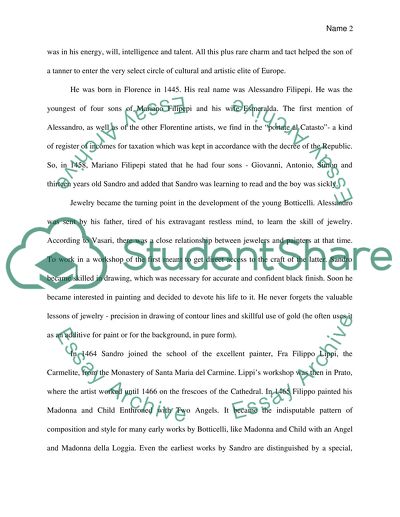Cite this document
(“Unique style and technique of Sandro Botticelli Research Paper”, n.d.)
Retrieved from https://studentshare.org/visual-arts-film-studies/1444286-unique-style-and-technique-of-sandro-botticelli
Retrieved from https://studentshare.org/visual-arts-film-studies/1444286-unique-style-and-technique-of-sandro-botticelli
(Unique Style and Technique of Sandro Botticelli Research Paper)
https://studentshare.org/visual-arts-film-studies/1444286-unique-style-and-technique-of-sandro-botticelli.
https://studentshare.org/visual-arts-film-studies/1444286-unique-style-and-technique-of-sandro-botticelli.
“Unique Style and Technique of Sandro Botticelli Research Paper”, n.d. https://studentshare.org/visual-arts-film-studies/1444286-unique-style-and-technique-of-sandro-botticelli.


